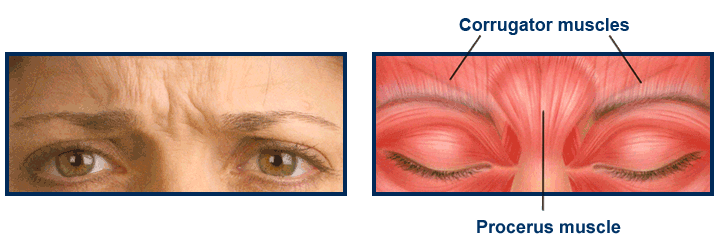How to Choose the Best Injection Depth for Anti-Wrinkle and Dermal Fillers
The question you will find yourself asking as you are starting out with performing injectables is: How deep do I go? or Do I need to be more superficial?
Anti-Wrinkle
When you are working with anti-wrinkle injections, it comes down to understanding your anatomy and the depth at which each muscle lays beneath the skin.
Not only is it important to understand where each muscle is located and the varying depths, but it will further reduce the risk of complications such as relaxing unwanted muscles and causing an eyebrow or eyelid ptosis.
For example, when you are treating the frown, the procerus and corrugator muscles lie at varying depths. Naturally, the ‘head’ of the corrugator lies deeper down and therefore the full length of the needle is needed to inject this portion of the muscle effectively. Whereas, as you move laterally from the head of the corrugator towards the tail end, this portion of the muscle becomes more superficial, and only ⅓ of the needle depth is required to effectively relax this portion of the muscle. Similarly, the procerus muscle lies deeper, and the full length of the needle is recommended to effectively relax this portion of the frown.
Dermal Filler
When it comes to injecting dermal filler, there are a few more factors that need to be considered. These will help you to decide what depth the dermal filler is to be injected, and the benefits and risks of injecting at each layer of the skin. These factors include:
What result are you trying to achieve?
Whether you are wanting to create volume, definition, lift or soften lines, each of these play a role in determining upon your injection depth. Softening fine lines will usually require a superficial injection, whereas facial contouring will usually require a deeper correction.
2. What is the risk of complications?
Understanding facial anatomy is paramount. You must have a thorough knowledge of what lies beneath the skin including nerve bundles, major arteries and veins and other structures. This will help you to identify the danger zones in which you should avoid, and at what depth each injection should be placed to reduce the risk of complications.
3. How will it move?
Understanding how the face moves and how the dermal filler interacts with the tissue and skin is an important consideration. With this comes the importance of understanding the cohesivity of various dermal fillers and identifying the best product for certain areas. For example, if you are injecting at a superficial depth, you would use a softer dermal filler with a lower G-prime to ensure it integrates well with the tissue. If you were to use a thicker or higher G-prime product at this depth, you would be able to visibly see the lumps.
Benefits and Risks of Injecting at Each Layer
Dermis
Injecting into this layer will often give you the most superficial support or traction. It is great for correcting skin weakness and providing strength to the skin to improve areas such as perioral and marionette lines.
The benefit of injecting in this layer is that it is relatively safe, and there are no major vessels.
Ensure to use products that are thinner or have a lower G-prime when injecting at this depth.
Hypodermis (Subcutaneous layer)
Often a cannula is used to pass through this layer and should involve minimal resistance. Injecting at this depth will allow you to reduce shadowing, improve facial contouring and provide some structural improvement.
The benefits of using a cannula through this layer allows you to add structure to areas such as the jawline, that would normally be too risky if injected with a needle, whilst remaining above major arteries.
It is however, important to be mindful of the facial artery when injecting the nasolabial folds, as it is often laying in the deep hypodermis.
SMAS and Deep Fat Pads
The Superficial Musculo Aponeurotic System (SMAS) layer is an important landmark to be aware of when injecting. Although it is never injected directly, it allows you to determine if you are above or below it. By injecting below the SMAS, you are in the deep fat pads which helps to provide lift when using dermal filler by supporting ligaments, such as in the cheeks. If you are above the SMAS, you will be in the hypodermis.
The benefits of injecting into the deep fat pads below the SMAS, is that this depth can be quite forgiving and you will not be able to see visible lumps of filler.
Periosteum
This is a layer of connective tissue enveloping the bone. Often these deep injections are in the cheeks, chin and jawline and you will know you are in the periosteum because you will hit bone with the needle.
The benefit of injecting at this level is that the product will often last longer at this depth due to lower risk of product migration and is great for providing lift and structure to the face.
There are however many “danger zones” whereby injections at this depth are not suitable in certain areas of the face due to the risk of occluding blood vessels. Such areas to be aware of can include the infraorbital foramen, the facial artery, the deep temporal artery and more, and a thorough understanding of such vessels, nerves and structures below, is imperative.




